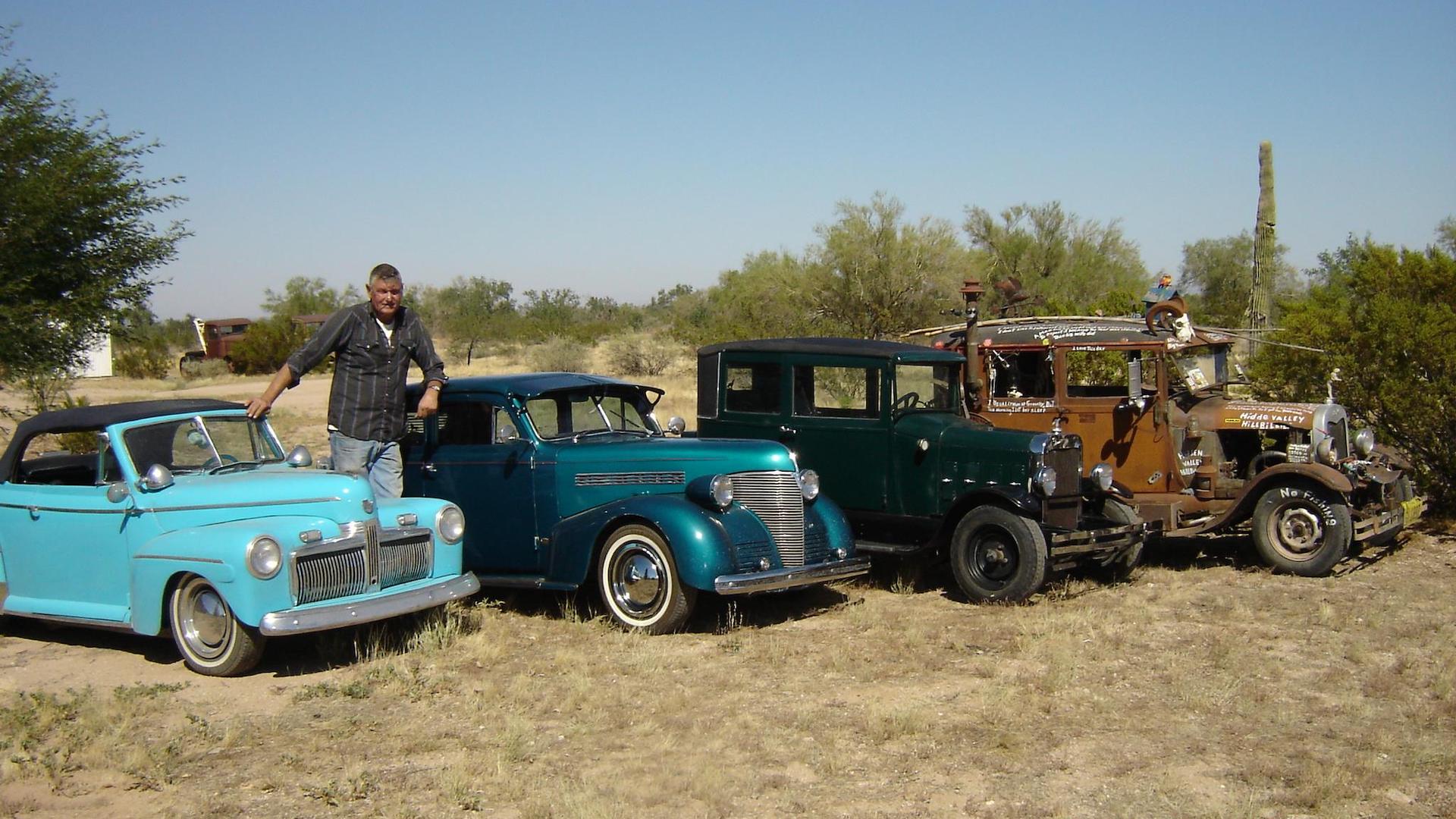

As a fixture of short-track racing, the Legends Car serves as a pillar of the international grassroots motorsport scene. As one would expect of a racing category consisting of diminutive, bike-powered hot rod lookalikes, it has peculiar prehistory, including a founder who has gone on to make a name for himself with handmade, small-scale replicas of vintage cars. Their creator calls them “dwarf” cars, but they aren’t sized just for kids—they’ll fit adults, and some if not all are even street-legal.
The story according to the Dwarf Car Museum’s website starts back in 1965, with a fella by the name of Ernie Adams. Using scrap steel from old refrigerators, hand tools, and an 18-horsepower Wisconsin generator engine, Adams cobbled together a faithful, fully drivable replica of a 1928 Chevrolet two-door. This car, later known as Grandpa Dwarf, was effectively the progenitor of Adams’ second, much later dwarf car, conceived at the end of the 1970s after he attended a sidecar race with a friend.

The two apparently agreed the racing would be better if the bikes had a fourth wheel, car bodies, and raced ovals to be easier to spectate (so, if they weren’t bikes at all). Thusly, second and third dwarf cars came about and made their competitive debut at the eighth-mile Arrowhead Speedway in march of 1981. The rest is, as they say, history; five-eighth-scale dwarf racing caught on quickly, and would later serve as the template for the Legends Cars raced today on both sides of the Atlantic.
Adams, however, didn’t hang his hat on this success and call it a day. Instead, he set to work testing the limits of his craftsmanship by scaling down a 1939 Chevy two-door. As before, he worked with a modest set of hand tools and homemade machinery, relying on photos of a muse as his main source of measurements, and sourcing wheels and a drivetrain from a 1972 Toyota. When finished at the end of two and a half years, the resulting car was not just cute, but dead reliable—the tiny Chevy had 54,000 road miles on it as of 2013 (if not earlier).
That was only the beginning of Adams’ series of “dwarf cruisers,” which have over the years come to include a 1942 Ford convertible, a 1929 Ford “hillbilly” car, a 1934 Ford, a 1940 Mercury, and the most spectacular of them all, a teal 1949 Mercury. Not much information is readily available about the “Rebel Rouser,” as it’s called, aside from the fact that it’s powered by a 1.3-liter Toyota engine that Autoevolution reports can push it to 100 mph.
Suffice to say, it’s the kind of novelty that money can’t buy, and it has certainly tried—Adams has reportedly turned down an offer of $450,000 for his mini Mercury. As far as the general public is concerned, Adams’ dwarf cruisers are for looking, not touching, which is why they spend most of their time on display at the Dwarf Car Museum in Maricopa, Arizona. It’s open to the public, making Adams’ creations far more accessible than any $68,000 Baby Bugatti—and infinitely more distinctive to boot.

Got a tip or question for the author? You can reach them here: james@thedrive.com